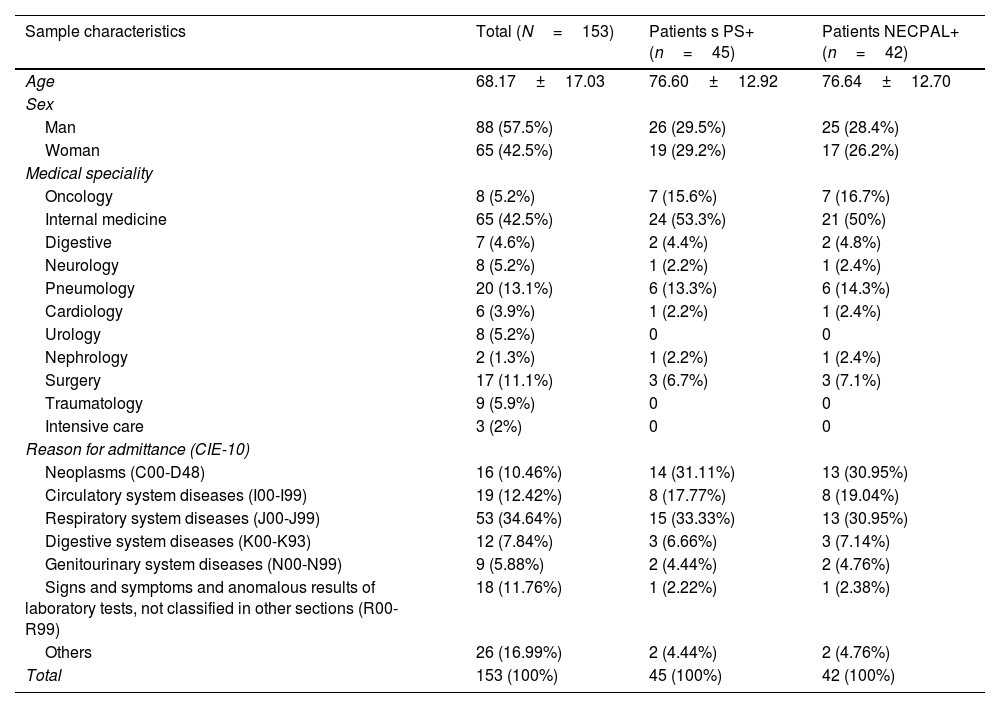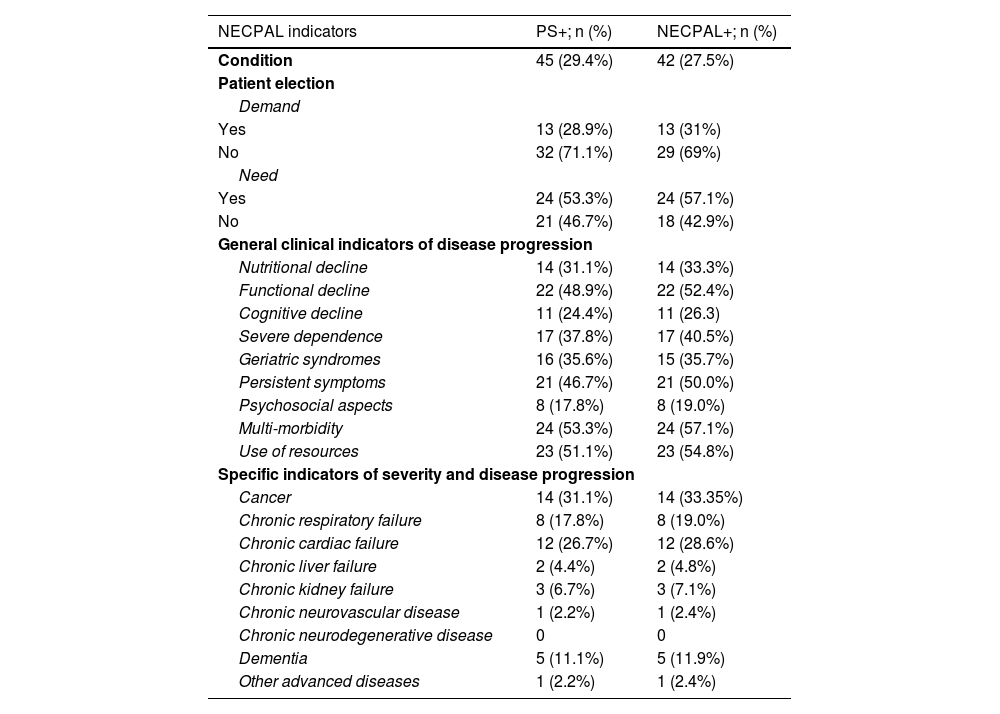To determine the prevalence of palliative care needs in patients in an acute care hospital and to analyze the profile of these patients.
DesignWe conducted a prospective cross-sectional study in an acute care hospital, in April 2018. The study population consisted of all patients over 18 years of age admitted to hospital wards and intensive care units. Variables were collected on a single day by six micro-teams using the NECPAL CCOMS-ICO© instrument. The descriptive analysis, on patient mortality and length of stay, was performed at a one-month follow-up.
ResultsWe assessed 153 patients, of whom 65 (42.5%) were female, with a mean age of 68.17±17.03 years. A total of 45 patients (29.4%) were found to be SQ+, of which 42 were NECPAL+ (27.5%), with a mean age of 76.64±12.70 years. According to the disease indicators, 33.35% had cancer, 28.6% had heart disease, and 19% had COPD, resulting in a ratio of 1:3 between patients with cancer and non-cancer disease. Half of the inpatients in need of palliative care were in the Internal Medicine Unit.
ConclusionsAlmost 28% of patients were identified as NECPAL+, most of them not identified as under palliative care in clinical records. Greater awareness and knowledge from healthcare professionals would facilitate the early identification of these patients and avoid overlooking palliative care needs.
Determinar la prevalencia de necesidad de cuidados paliativos en pacientes en un hospital de agudos y analizar el perfil de estos pacientes.
DiseñoEstudio transversal prospectivo en un hospital de agudos, en abril de 2018. La población de estudio fueron todos los pacientes mayores de 18 años ingresados en las diferentes unidades de hospitalización y cuidados intensivos. Las variables fueron recogidas en un solo día por seis micro equipos, utilizando el instrumento NECPAL CCOMS-ICO ©. Se realizó un análisis descriptivo sobre la mortalidad y estancia media de los pacientes NECPAL positivo, pasado un mes del ingreso.
ResultadosSe evaluaron 153 pacientes, de los cuales 65 (42,5%) eran mujeres, con una edad media de 68,17±17,03 años. Un total de 45 pacientes (29,4%) tuvieron la PS+, de los cuales 42 fueron NECPAL+ (27,5%), con una edad media de 76,64±12,70 años. Según los indicadores de enfermedad, el 33,35% presentaba enfermedad oncológica, el 28,6% enfermedad cardíaca y el 19% EPOC, lo que resulta una relación 1:3 entre pacientes con enfermedad oncológica y no oncológica. La mitad de los pacientes hospitalizados con necesidad de cuidados paliativos se encontraban en la Unidad de Medicina Interna.
ConclusionesCasi el 28% de los pacientes fueron identificados como NECPAL+, la mitad de ellos pertenecientes al servicio de Medicina Interna. Una mayor conciencia y conocimiento por parte de los profesionales sanitarios sobre la identificación temprana de necesidades paliativas facilitaría su atención, focalizando el plan terapéutico a sus necesidades.









